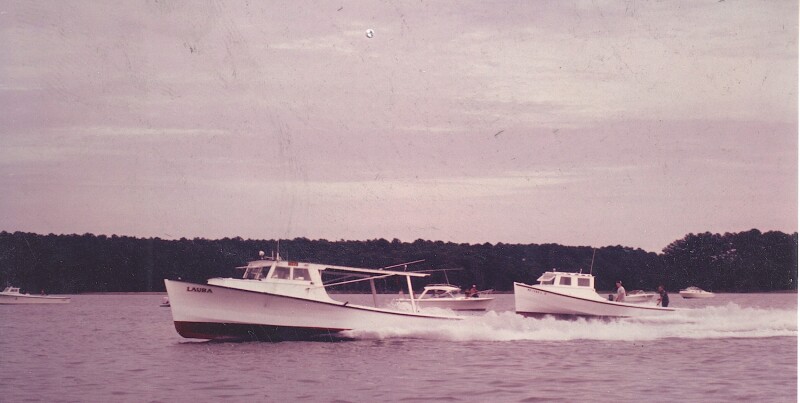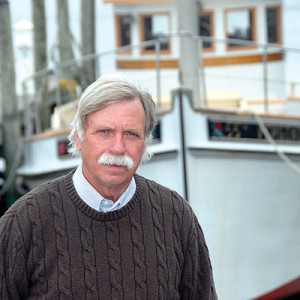One of the most interesting and unique boatbuilding regions on Chesapeake Bay is southern Maryland – home of the Potomac River dory.
Built by generations of Maryland Potomac River boatbuilders, dories are fore-and-aft bottom planked boats, with high chine lines and flared sides near the bow to knock the seas down when underway. The design was a competitor of the deadrise and cross-planked commercial fishing vessels used in Virginia and throughout most of the rest of the bay region.
Danny Holden of Reedville, Va. has just completed a conversion of a dory style “long-planked” boat named Laura, turning what had been a “six-pack” charter boat to a commercial hook and line fishing boat. The 38-footer was built in 1970 by Perry A. Gibson at Avenue, Md.
Laura was owned by Holden’s father, Captain Bobby Holden, who purchased the boat in 1974 and who recently turned the boat over to his son. Danny Holden has converted his boathouse on Cockrell’s Creek into a boatshop, complete with its own boatlift to haul out vessels.
He is currently rebuilding a 46-foot cross-planked deadrise built in 1949 at Krentz’s Marine Railway in Harryhogan, Va. With his shop, Holden is taking wooden boats that are near death and bringing them back to life.
Holden, who retired from the Coast Guard as a machinist mate 1st class, has a world of experience working on boats.
He trained as a ship’s carpenter/mate for the Historic Saint Mary’s City Commission; was a service technician at Tall Timbers Marina in St. Mary’s County, Md., where he repaired and maintained wooden boats; and was an instructor at Seafarers Harry Lundeburg School of Seamanship at Piney Point, Md., where he taught operation of machine tools and their use in repair of pumps and valves.
He has a love for Potomac River dories and generally for old wooden commercial fishing boats.
“I grew up with the Laura and I respect the way Perry Gibson built his boats,” says Holden. “Mr. Gibson was an artist in the sense that he understood the nature of wood and he shaped his hulls into a work of art.”
Holden pulled the old house and decking off. He replaced the forward house with a center-console style pilothouse, using a portion of the roof from the old house. The center console gives Holden cover in bad weather and easy and quick accessibility to his rods when fishing for rockfish with his Potomac River and Virginia commercial tags.
He also installed dual steering stations – one inside the house and the other near the stern where he can easily reach his fishing rods. The hull had been coated with C-flex fiberglass, which Holden says saved the boat.
The Laura is powered by a 350 h.p. 454 Chevrolet engine. “She was built for speed,” he says. “My father used her some for commercial hook and line and charter boat fishing in Tangier Sound. He could get to the sound (from the Potomac) in two hours, while it took everyone else two hours and a half to three hours, and Daddy used half the amount of fuel as they did.”

The sides and bottom planking are built out of cedar; the knees, stem and all structural supports are of white oak; and the keel, of spruce pine. The bottom planking is fastened with rust-resistant Monel nails, while the top work fasteners are galvanized nails.
“I do wish he had used Monel nails throughout the entire boat,” says Holden.
Holden has completed five deadrise restorations at his boatshop, and this is his second dory. The other one was named Madness, built in 1971 by Gibson.
“I just have a love and respect for wooden boats,” he says. “I hate to see them rot away!”







